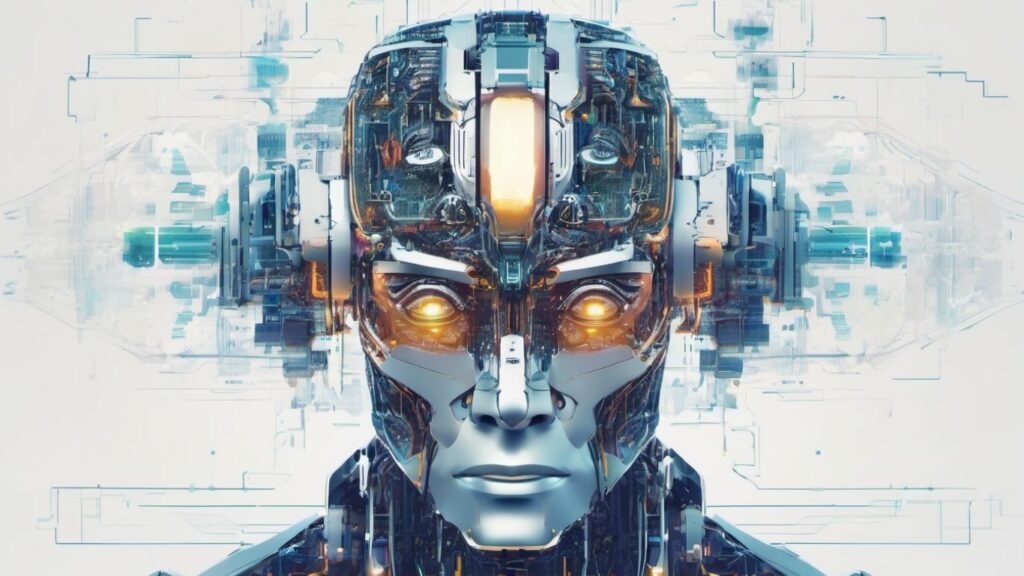Artificial Intelligence (AI) is revolutionizing how we interact with the world. Among its most exciting developments is AI vision, particularly in object recognition and classification. This technology is reshaping various industries, from healthcare to retail, by enhancing automation, efficiency, and user experience.
The Evolving Role of Developers and AI Researchers
The ongoing advancements in AI vision capabilities depend heavily on the expertise of developers and AI researchers. These professionals are at the forefront of integrating cutting-edge algorithms and machine learning models to improve the accuracy and efficiency of AI vision systems.
Key Contributions:

- Algorithm Development: Creating sophisticated algorithms that can recognize and classify objects with high precision.
- Model Training: Leveraging vast datasets to train AI models, ensuring they can identify various objects in diverse conditions.
- Innovative Solutions: Developing new techniques to overcome technical challenges such as lighting variations and occlusions.
Real-World Applications and Use Cases
AI vision technology is being deployed across multiple sectors, providing tangible benefits:
Healthcare
- Medical Imaging: AI vision aids in diagnosing diseases by analyzing medical images, enhancing the accuracy and speed of diagnoses.
- Surgical Assistance: Real-time object recognition helps surgeons during complex procedures, improving outcomes and patient safety.
Retail
- Inventory Management: Automated systems can track inventory levels and optimize stock, reducing wastage and improving logistics.
- Customer Experience: Enhanced visual search capabilities allow customers to find products quickly, enhancing their shopping experience.
Autonomous Vehicles
- Navigation: AI vision enables self-driving cars to recognize and react to road signs, pedestrians, and other vehicles, ensuring safe navigation.
Security and Surveillance
- Threat Detection: Automated surveillance systems can identify potential threats in real time, enhancing public safety.
The Potential of AI Vision

AI vision is not just about recognizing objects; it’s about creating more intelligent, responsive systems that can adapt and learn. The potential applications are vast, and we will see even more innovative uses as the technology evolves.
Enhancing Automation
AI vision can automate repetitive and mundane tasks, freeing human resources for more strategic work.
Improving Efficiency
AI vision can streamline operations and decision-making processes by providing real-time insights and data.
Elevating User Experience
From personalized shopping experiences to intuitive interface designs, AI vision enhances how users interact with technology.
Ethical Considerations and Data Privacy
While AI vision has significant benefits, ethical considerations and data privacy concerns must be addressed.
Importance of Ethical AI Development
Ensuring fairness, transparency, and accountability in AI vision systems is vital. Developers should adhere to ethical guidelines to prevent biases and ensure that AI applications are used responsibly.
Mitigating Biases
AI vision algorithms can be prone to biases if trained on non-representative datasets. Diverse and inclusive data collection is necessary to mitigate this risk.
Informed Consent and Privacy
Users must be informed about how their visual data is collected and used. Compliance with data protection laws and obtaining explicit consent are essential for maintaining trust.
Balancing Safety and Privacy
In surveillance applications, public safety must be balanced with individual privacy rights. Clear regulations and standards should guide deploying AI vision technologies in these contexts.
Key Technical Challenges
Accuracy and Speed
AI vision systems must overcome limitations in accuracy and speed, especially for real-time applications. Continuous improvements in algorithms and hardware can help achieve reliable performance.
Environmental Variations
AI vision must perform well under varying conditions, such as different lighting and occlusions. Advanced training and adaptation techniques are needed to address these challenges.
Scalability and Efficiency

Handling large datasets efficiently without compromising performance is a significant challenge. Scalable algorithms and optimized resource management are crucial for widespread adoption.
Interpretability and Explainability
Understanding the decision-making process of AI vision models is essential. Developing interpretable models helps build trust and facilitates debugging and improvement.
Security Against Adversarial Attacks
AI vision systems are vulnerable to adversarial attacks, where manipulated inputs can deceive the model. Enhancing model robustness and security measures is necessary to mitigate these risks.
Frequently Asked Questions (FAQs)
What is AI vision?
AI vision is the technology that enables machines to interpret and understand visual information from the world, much like human vision. It involves using complex algorithms and machine learning models to recognize and classify objects in images and video.
How does AI vision work in object recognition?
AI vision systems use a combination of algorithms, neural networks, and vast datasets to identify and classify objects within an image. The process involves several steps, including image preprocessing, feature extraction, and classification based on trained models.
What are the main applications of AI vision?
AI vision has diverse applications across various industries, such as healthcare, retail, autonomous vehicles, and security. It can be used for medical imaging, inventory management, real-time navigation in self-driving cars, and threat detection in surveillance systems.
What are the ethical considerations in AI vision?
Ethical considerations include ensuring fairness, transparency, and accountability in AI systems. It’s essential to prevent biases, obtain informed consent for data use, and balance public safety with individual privacy rights, particularly in surveillance applications.
How can biases in AI vision be mitigated?
Biases in AI vision can be mitigated using diverse and representative datasets for training. It’s also important to include diverse perspectives in the development team and continuously monitor and test AI systems for fairness.
How do AI vision systems handle environmental variations?
AI vision systems use advanced training techniques to perform well under varying conditions, such as different lighting and occlusions. Continuous learning and adaptation help improve performance in diverse environments.
What are the challenges with scalability in AI vision?
Scalability involves efficiently handling large datasets without compromising performance. This requires scalable algorithms, optimized resource management, and efficient use of computational resources.
What measures are taken to ensure the security of AI vision systems?
AI vision systems can be secured against adversarial attacks through robust model training, regular testing, and implementing security measures that detect and prevent manipulated inputs intended to deceive the model.
Conclusion
AI vision technology is a game-changer for many industries, offering unprecedented opportunities for growth and innovation. However, addressing ethical and technical challenges is essential to ensure responsible development and deployment. By doing so, we can harness the full potential of AI vision to transform our world.











